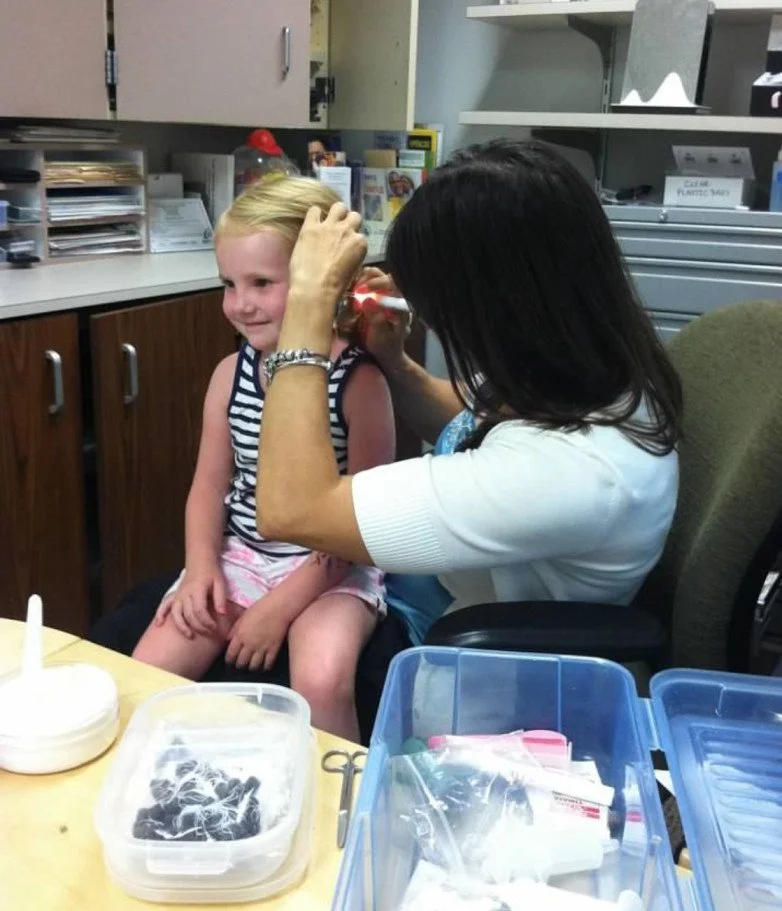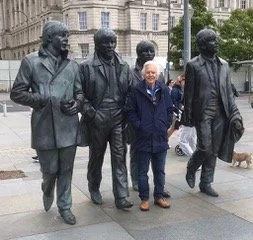The surprising roots of a cultural phenomenon.
By Robert Small, as told to Hearing Health Foundation
When I got out of college in the 1970s I started working backstage in off-Broadway theater. They’re up front and tell you there’s no money but that you can put it on your resume, which is a good thing at the start of your career. I was young enough then to fall for that line.
Still, I needed money. The music business had not yet really evolved into having an industry with the need for lighting and sets—that stuff didn’t exist. In the 1970s this began to change, and people setting up concerts would go to the theater to find crew who knew how to use lights and electrical to help produce concerts. I was driving a taxi and getting paid anywhere from $20 to $25 a day, and roadies for musicians were paid $75 a day—so I said, sign me up! And I became a roadie.
In the early ’80s heavy metal was just everywhere. It was the beginning of theatrical touring concerts, and I was able to carve out a niche in this new industry for staging shows and then touring with the shows.
Elton John (left) with Robert Small for a VH1 shoot in the 1980s.
I remember one metal show in Hollywood, Florida, in a giant gym, or maybe it was an airplane hangar. The headliners were Mötley Crüe, and I was doing a video for the opening act. The sound system was pretty substantial. I was wearing a headset to talk to the cameraman—a double earmuff headset with a mic. I was able to hear and speak to the director of photography but it was very, very distorted because of the high volume.
Since I was onstage where it was especially loud, what I would do is hold the hips of the cinematographer and lead him to where I wanted to shoot. We were so focused on getting the shots in the midst of the loud music that it just seemed normal to have to communicate this way.
But afterward my head rang for a long time. And while I know that’s not the only loud event I experienced like this, that’s the main one I remember really affecting my hearing.
Nowadays when you go backstage at a concert, there are tables with piles of earplugs. It’s a no joke thing at this point. But back in the day, if somebody had earplugs or somebody would give you plugs, it just wasn’t something you used.
I couldn’t really escape the loudness with the work I was doing. We were usually right next to the amplifiers, really close. If you were running a lightboard you knew you’d be next to a sound stack of Marshalls, and that’s where you’d work for the whole show. Then your head would ring and you didn’t know what kind of damage you were doing, long term, so you just didn’t pay attention to it.
And I paid the price for that. I use a hearing aid now, which I am thrilled to have. It changed my outlook when I realized what I was missing.
Metal to MTV
Eventually I ended up doing work for MTV, Nickelodeon, and Comedy Central. I knew how to do things because of my theater background and how to make everything onstage look good. Then I started working on music videos, also a new media type back then, first as an art director and then as a director.
Most recently Robert Small directed a biopic about 1960s-’70s singer-songwriter-activist Lesley Gore, titled “You Don’t Own Me” and featuring interviews with Quincy Jones, Shirley Manson (above, with Small), and others, with Melissa Etheridge reading from Gore’s diaries.
The seed for “MTV Unplugged” really came from being on the road with musicians touring. When we had downtime we’d socialize with the band, hanging out with them in their hotel rooms and they’d eventually take out their guitars, or we’d be on the bus and it’d be the same thing with them strumming their guitars. This is how they made music. It’s how they created it and wrote songs, adding in other instruments and production later.
All artists understand acoustic music; they’re comfortable with it because it’s organic to them as artists and songwriters. With “MTV Unplugged,” this is what we tapped into, giving the artists the opportunity to show that side of how they create and perform.
People thought it would just be folk music. They didn’t get the concept that it was still rock music, just played acoustically. But bands got it, and it was maybe when Don Henley came on that we really started to get attention. And then Eric Clapton—the show attracted the interest of that level of artist, which was amazing.
Filming acoustic concerts also had the added attraction for me of not doing additional damage to my hearing. I needed to get away from really loud shows, and that pushed me toward finding something we could do around performances that could still resonate, just not literally.
Acoustic performances help create a greater intimacy and a deeper connection with the music, in my opinion. It’s not the same as Auto-Tune and other technology-related production you get these days.
When someone talks into a microphone and plays a guitar and then stops and says, let me start again, and you see them doing that, it just shows you another side of the artist beyond the big concert productions.
Inspired by the Theater
Because MTV was cool then, anything on MTV was automatically cool. But actually our pilot was done in front of a VH1 set because we didn’t have money for a studio. And because of this, we covered the set like you would a theater stage in rental drapes—and this went on to become a very signature look for musicians and musicians performing—having drapes. Behind those drapes was a talk show set!
The other theatrical touch was doing the show “in the round.” There weren’t many ways on TV you could show a 360-degree view around the artist. We needed to film in the round because we had all the cameras and sound crew and technology to fit, and that took up space where an audience might be.
So we decided to have the audience sit wherever we could fit them. Then TV viewers could look at the television screen and see the artist—and then also see the faces of the people behind or beside the artist who were also listening to the artist, including the crew, electrical wires. It’s like a behind-the-scenes look. It feels exclusive and intimate. Nowadays people get this approach, but in 1989 it was really unusual.
It all came back to those first days working off-Broadway for no money and leading all the way to what became a cultural phenomenon. Looking back, I see how some of the limitations we faced—only having a basic set, lots of equipment, and for me needing a quieter performance space—became hallmarks and the legacy of “MTV Unplugged.” I’m really proud of the work we did, and if acoustic performances saved someone’s hearing even a little, all the better.
Robert Small is a producer and director. He is the director of the New Media Lab at City University of New York’s Macaulay Honors College. With Jim Burns he was the co-creator of “MTV Unplugged” which earned numerous Emmy Awards. Many individual artists’ recorded sessions have gone platinum and earned Grammy Awards, including Eric Clapton’s 1992 “Unplugged” album that is the best-selling live album of all time. He also directed “I Ain’t Scared of You: A Tribute to Bernie Mac.” Most recently Small directed a biopic about 1960s-’70s singer-songwriter-activist Lesley Gore, titled “You Don’t Own Me” and featuring interviews with Quincy Jones, Shirley Manson, and others, with Melissa Etheridge reading from Gore’s diaries.
This appears in the Fall 2022 issue of Hearing Health magazine.









This new computer model can serve as the bedrock not only to better understand how the middle ear vibrates during bone conduction but also to develop new diagnostics for middle ear conditions and inform the design of novel hearing devices.